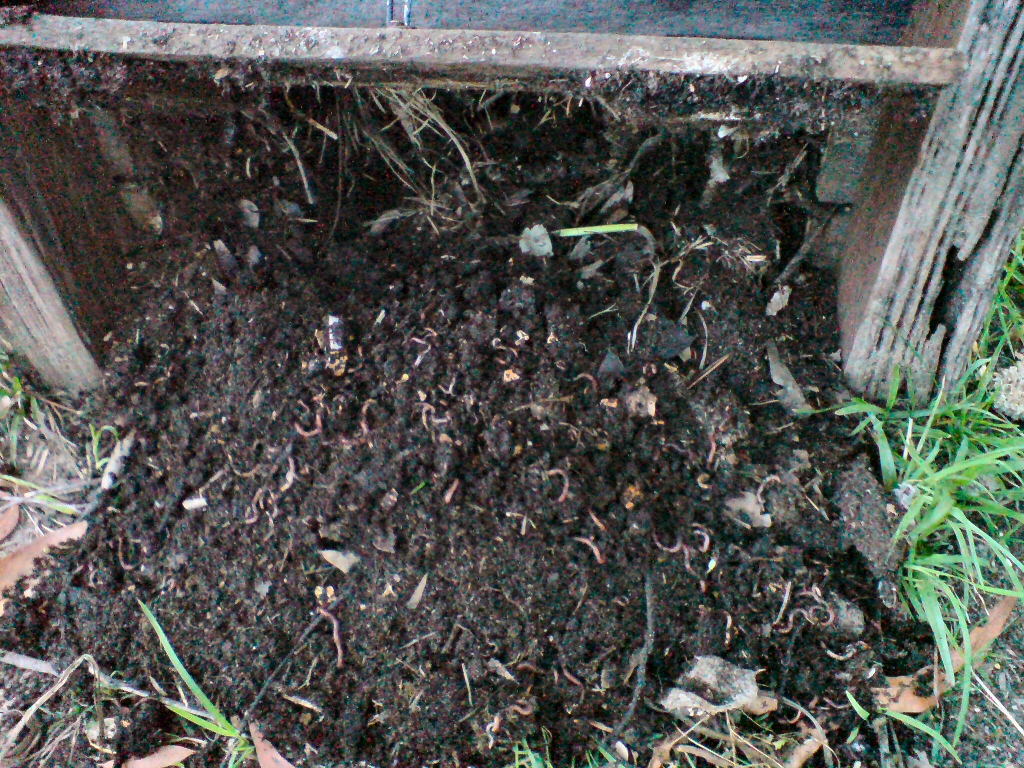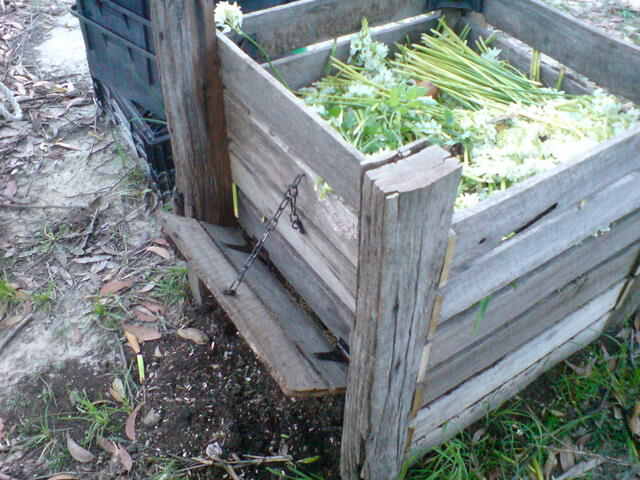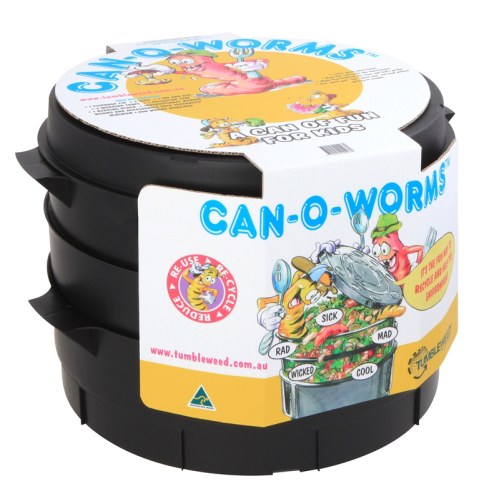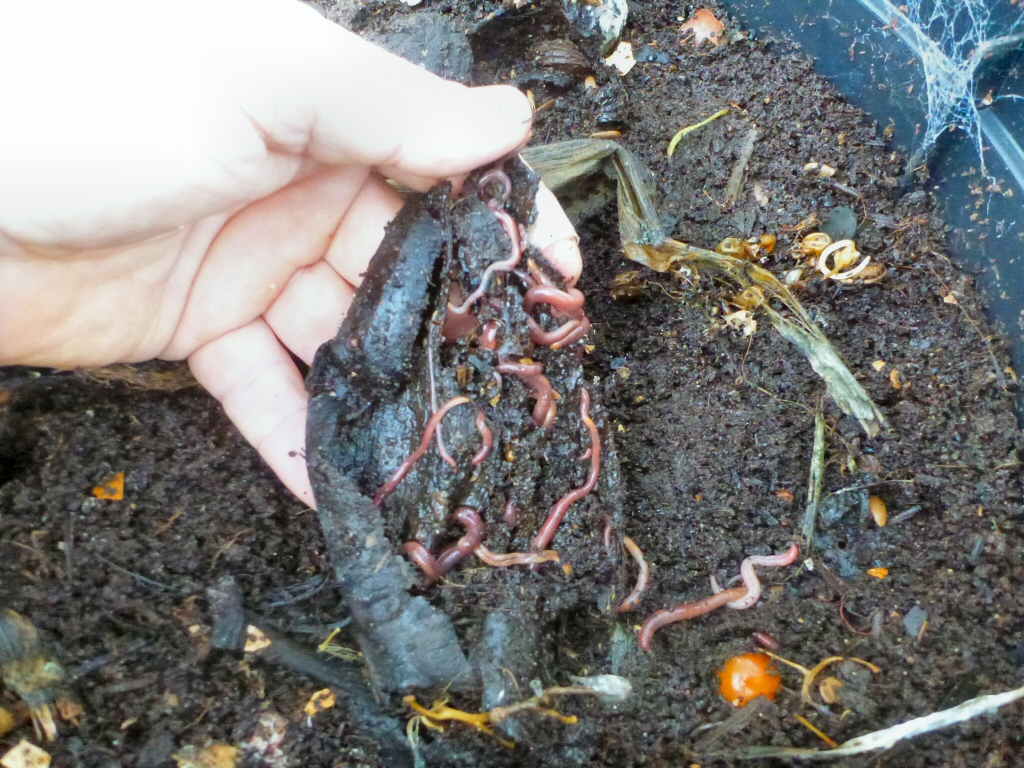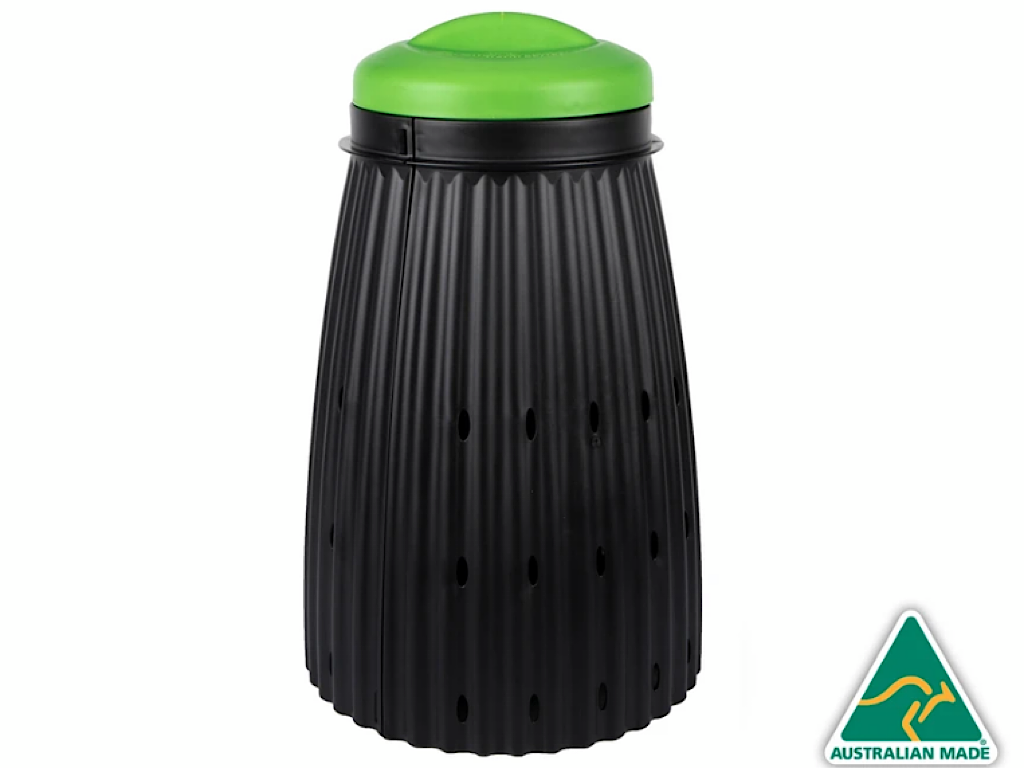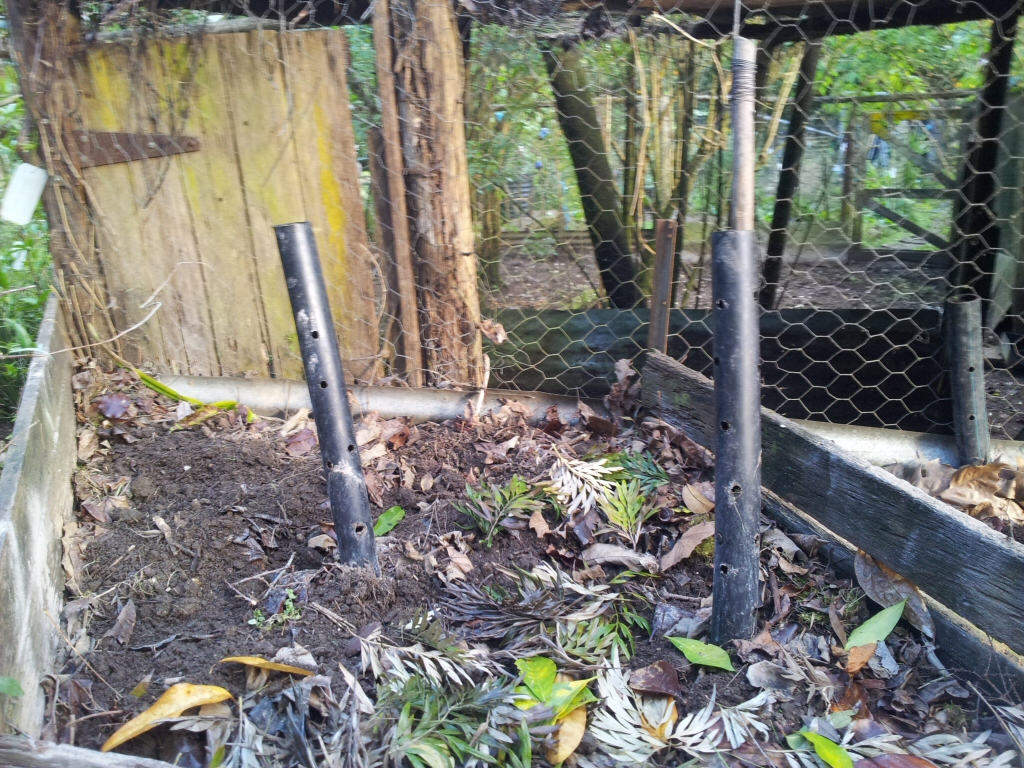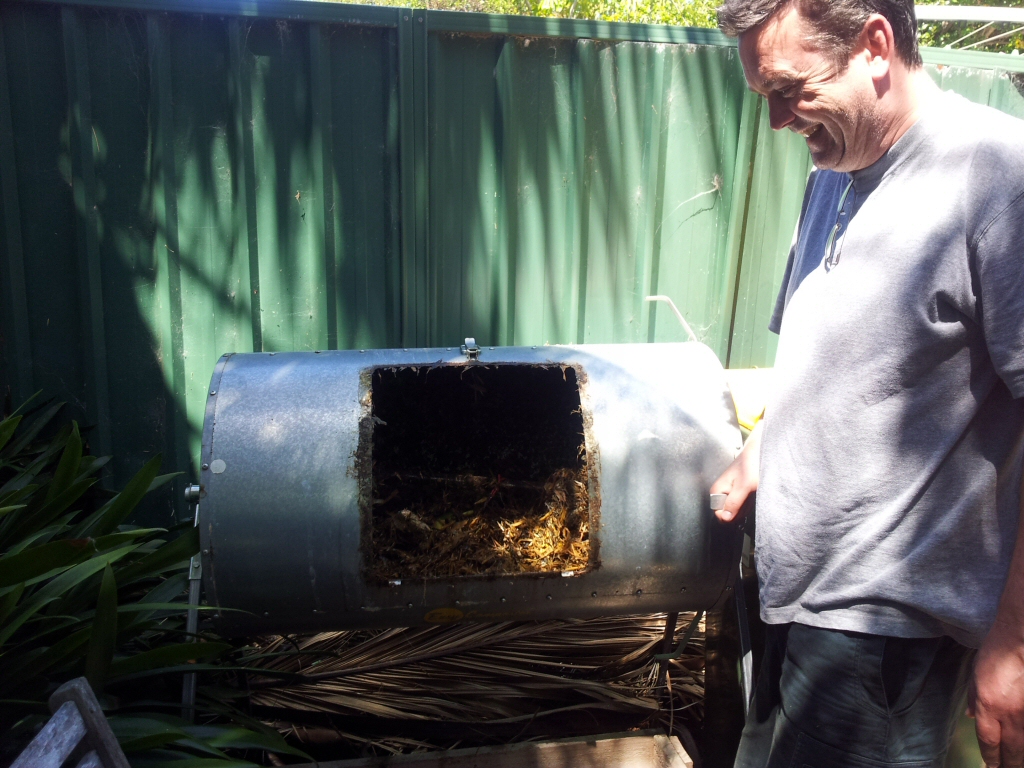Composting is the process of decomposing materials that were once from living organisms. The choice of how to go about it in the home garden will depend on a number of factors such as space, the amount and type of organic material available at any one time and the time a gardener has to make it work. It must be said that there is a composting method to suit gardens of every size from pocket handkerchief balconies to large acreages.
Cold composting versus hot composting
To experienced gardeners composting generally conjures images of hot steamy piles that smell strongly of ammonia. This is a classical ‘hot’ compost heap. Hot composting occurs when conditions are right for beneficial oxygen loving micro-organisms (known as thermophilic or heat loving microbes) to build up rapidly inside the heap creating temperatures up to 80 degrees C. If the heap does get that hot for at least several days it will be sufficient to kill virtually any weed or plant disease present.
‘Hot’ composting is obviously a wonderful idea as it allows you to decompose virtually any organic material. Unfortunately, it is often not practical to get it hot enough in the average suburban backyard to be fully effective. The major problem is that a critical mass of at least half a cubic metre is generally required to achieve high enough temperatures to kill any weeds or plant pathogens in the pile. The heap also needs to be aerated every few days which may be too big an ask for time poor suburban gardeners. If this sounds like you then there are composting alternatives that take longer but need much less maintenance.
‘Cold’ composting on the other hand is not as quick but is a much more practical option for small gardens. It’s the process whereby a variety of micro-organisms gradually break down the layer of organic matter on the soil surface in a natural forest ecosystem. Small amounts of organic waste will undergo the same process in a garden situation and will be helped along by earthworms that are attracted to and feed on materials that have sufficient nutritional value to sustain them. The higher the nutritional content the quicker breakdown will occur such that kitchen scraps tend to be gone in a matter of weeks while woodier materials such as dead leaves and bark may take many months or even years if they are left to their own devices. The trick is to mix higher nutrient materials with the lower ones to speed up the cold composting process. Another advantage of cold composting is that it can be done in a dark, shady corner of the garden that is not much good for other purposes. A hot compost heap ideally needs to be in a sunny position to generate the heat needed to kill weeds and diseases.
While cold composting is probably a more practical option for today’s gardener it needs to be understood that it takes a lot longer than a well maintained ‘hot’ heap. Diseased plant material and persistent perennial weeds such as grasses with runners (eg kikuyu and couch) or bulbous plants such as onion weed and oxalis will only be destroyed in a sufficiently hot compost heap. Meat scraps and bones should also be avoided in cold heaps as they can stink and attract vermin more so than other organic wastes. For all these problem materials either use hot compost heaps or simply deposit it in a green waste bin which will result in it being composted at a suitable facility.
The magic pudding compost heap
One of the most practical composting options of all is a cold compost bin that has a flap or opening at the base which allows you to remove mature compost that has gradually worked its way to the bottom of the heap over several months. Regular removal of finished compost causes the heap to drop in the bin thus making room for fresh material to be added at the top. This is a very practical option for gardeners who generate small amounts of organic waste (such as kitchen scraps) on a daily basis.
Vermicomposting
Commercially available worm farms are an intensive form of composting with worms (vermicomposting). Such units are designed to maximise the activity and population of worms to achieve a high turnover of organic waste. Essentially a worm farm could be considered as a very intensive form of cold composting that is also very suitable for receiving small amounts of new material every day if required. The cold composting technique mentioned above will also naturally attract a population of earthworms that can live happily in the pile and help decompose the small amounts of new waste being added to the top of the heap if a worm farm looks like too much work.
Aerobic versus anaerobic composting
One of the most common problems encountered in the home compost heap is a lack of oxygen in the pile, particularly when lots of moist kitchen scraps or similar material is added in bulk. Too much moisture leads to a proliferation of microbes that can thrive in oxygen-free (anaerobic) conditions. Not only do these organisms create evil smells such as rotten egg gas (hydrogen sulphide), they also tend to release undesirable by-products such as methane.
Aeration can be achieved most simply by turning the heap with a pitchfork but if space is limited specialised tools such as large corkscrew-like implements that can be used to turn the heap in situ. Alternatively drill lots of holes in some rigid plastic pipes and insert them into your heap whether it is a cold or hot heap and leave it in place to give constant aeration.
Compost tumblers are another practical solution to the issue of oxygenating compost in a small space. Giving the compost a turn every few days will significantly increase the speed of decomposition. One disadvantage of this method is that adding small amounts of organic waste every day is not particularly practical in a tumbler as it is best done in batches otherwise more recently added material will not have had a chance to break down before you wish to use it.
Nutritional balance
One of the most critical elements in any composting system is having an optimal balance of nutrients to fuel the growth of the microbes responsible for organic matter decomposition. Text books refer to the ratio of carbon to nitrogen needing to be around 30:1 which means that a lot of dry, woody material can be broken down with the addition of relatively small amounts of high nitrogen materials. A good practical way to ensure the right balance is to always place a thin layer of high nutrient material such as manure or kitchen scraps directly on top of each layer of low nutrient material such as straw, dead leaves, bark or shredded paper.
Moisture content
The microbes that break down organic matter respire in the same way animals and plants do and therefore need a certain level of moisture as well as oxygen to function. If the heap is too dry activity slows down. On the other hand if there is too much moisture there is not enough room in the pore spaces of the heap for the oxygen they require. A great rule of thumb is that you should be able to squeeze only a few drops of moisture from a handful of the material from the heap. It is OK to simply hose the heap down if it is too dry.
Composting Tips
By finely chopping up organic materials you greatly increase the surface area available to the micro-organisms that decompose your compost. For kitchen scraps like orange skins and egg shells simply take a little extra time to dice or crush them up before adding to the compost. For bulkier materials such as garden prunings, put them on the lawn and run over them with the mower and catch the resulting finely chopped residue which will break down far more quickly as a result.
Using compost in the garden
When the compost has reached a dark colour and fibrous texture it is generally ready to use. All compost is fantastic as a soil conditioner that will boost your soil’s capacity to store both water and nutrients. Whether your compost can also be used as a fertiliser will depend entirely on the nutritional content of the raw materials that went into it. If you have used lots of manure then your compost will be full of goodies that make it a fabulous addition to dig into the soil for heavy feeders such as fruit and vegetables, roses and annuals. On the other hand if your heap was constructed mainly from lower nutrient materials as will be evidenced by the presence of visible leaves and stems in the finished product then it is better to use it as mulch on top of your soil for any and all plants in your garden
Composting is the ultimate win/win activity in the garden. By choosing a system that is most appropriate to your household you will be very efficiently recycling all your organic materials in a way that is making your garden more and more sustainable every year.

